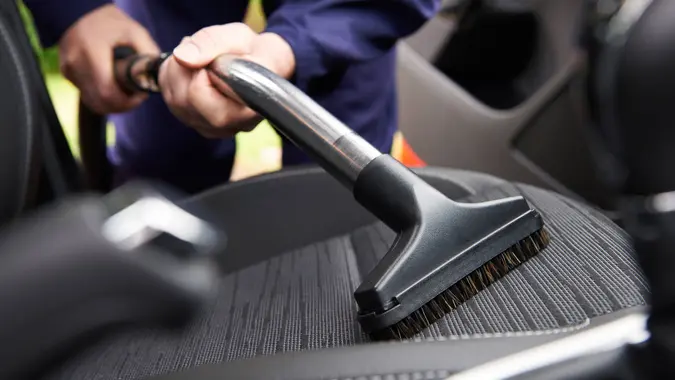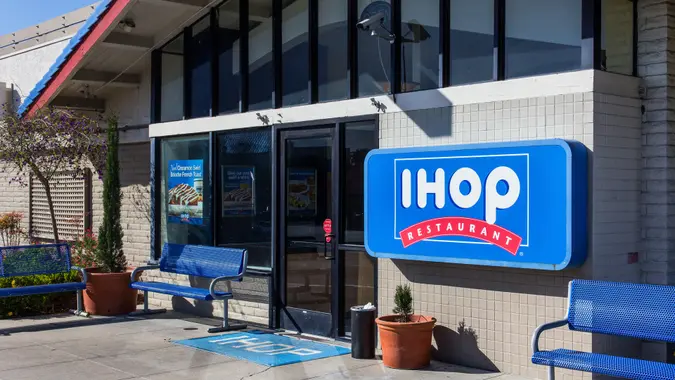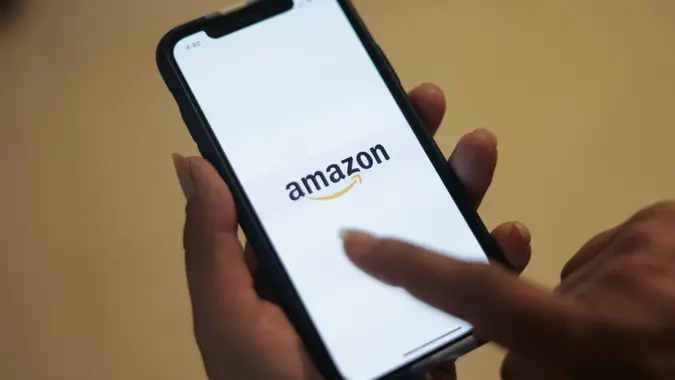4 Tesla Charging Mistakes That Could Cost You Thousands

Commitment to Our Readers
GOBankingRates' editorial team is committed to bringing you unbiased reviews and information. We use data-driven methodologies to evaluate financial products and services - our reviews and ratings are not influenced by advertisers. You can read more about our editorial guidelines and our products and services review methodology.

20 Years
Helping You Live Richer

Reviewed
by Experts

Trusted by
Millions of Readers
Despite recent difficulties, Tesla is still the top option in the electric vehicle (EV) market. Tesla owners don’t need to purchase gas, but they do have to pay to charge their cars. Charging a Tesla battery must be done wisely.
Replacing the lithium-ion battery can cost at least $13,000, according to J.D. Power. The publication also stated that the automaker warranties most batteries for at least eight years.
Following unwise charging practices can seriously impact the battery’s lifespan, costing owners thousands. Here are four ways Tesla owners should stop charging their cars.
Don’t Charge to 100%
Smartphone owners can empathize. There’s a belief that it’s best to consistently charge your Tesla battery to 100%. That is a myth, and it can harm your EV battery. In fact, it’s often advisable to keep your Tesla battery charged between 20% and 80%.
“A full charge to 100 percent is not good for lithium-ion batteries. You can lower the maximum charging limit with your EV’s onboard charger,” according to Green Cars. It’s fine to charge to full for longer drives, but it’s best to stay at or under a 90% charge. This matches Tesla’s recommendations, which advise charging only to 100% for long trips.
Ignoring the Recommended Settings
Following recommended settings typically is the best way to safeguard a purchase. An EV is no different. While it’s tempting to override default charging guidance with the belief that more range is better, it’s best to avoid this impulse.
Many Tesla cars have a battery management system to help monitor the health of the battery. Users can refer to the owner’s manual provided by Tesla to learn how to run a battery health test to make sure they’re not harming the battery.
Charging in Extreme Weather
Extreme weather, either cold or hot, can negatively impact a car battery. EV batteries are little different. Charging during extreme heat or cold can seriously impact the health of a Tesla battery. Planning before charging puts the car in the best position to mitigate harm to the battery.
Tesla recommends using the built-in trip planner at least 30 to 45 minutes before arrival at a charging destination in intense heat or cold. Preconditioning the battery is also advisable, especially if the trip is under the suggested time.
Stop Using Superchargers as Your Primary Charging Method
Superchargers are a good way to quickly bring your Tesla battery to full. While convenient and fast, it shouldn’t be the sole method owners charge their EVs. It’s wise to mix in at-home and Level 2 charging when possible.
Tesla advises to primarily use superchargers for long road trips or emergencies. Additionally, it advises owners to consider home charging options to optimize battery health. Charging at home is often cheaper than using a supercharger, depending on where you live. It’s important to keep that in mind when considering costs.
As gas prices continue to be costly, owning a Tesla may make sense for some Americans wanting monthly savings. Wisely charging your Tesla battery is one of the best ways to maximize those savings.
More From GOBankingRates
- Nearly 1 in 3 Americans Hit by a Costly Holiday Scam, Norton Survey Shows -- How To Avoid This
- Here's What the Average Social Security Payment Will Be in Winter 2025
- How Middle-Class Earners Are Quietly Becoming Millionaires -- and How You Can, Too
- The Easiest Way to Score $250 for Things You Already Do
 Written by
Written by  Edited by
Edited by 


























